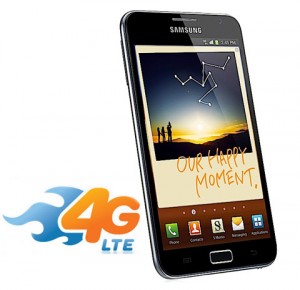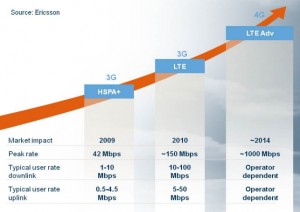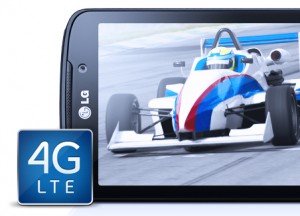
By Gadjo Cardenas Sevilla
Canadians can enjoy increased high speed connectivity now that Rogers, Bell and Telus are all offering LTE (Long Term Evolution) data speeds and corresponding mobile devices.
LTE, is a standard for wireless communication of high-speed data for mobile phones and data terminals. It is based on the GSM/EDGE and UMTS/HSPA network technologies.

On 3G data, I have experienced an average of 7-10 Mbps download speeds. Testing LTE speeds on the Samsung Galaxy Note on Rogers (the poster-device for LTE in Canada now that it is available from the Big Three) yielded around 22 -25Mbps download speeds which is more than double the speed we are used to on 3G.
Good for Consumers
LTE is good for users because when combined with compatible smartphones and tablets, they can enjoy faster download and upload mobile speeds from the Internet which can approximate what they are getting from their home cable or DSL high speed services.

Telus, the latest telco to unveil their LTE service last week, claims speeds of up to 75 megabits per second, although users will see averages of between 12 and 25 Mpbs.
Telus launched LTE their service in 14 cities including Vancouver, Calgary, Edmonton, the greater Toronto area, Kitchener, Waterloo, Hamilton, Guelph, Belleville, Ottawa, Montreal, Québec City, Halifax and Yellowknife.
Rogers claims its network can support maximum theoretical download speeds of up to 75 Mbps on the Rogers LTE network. Typical download speeds range from 12 Mbps to 25 Mbps. Maximum theoretical download speeds will increase to up to 150 Mbps when supported by the right hardware.
Bell’s claims are that Initially the 4G LTE network will provide access to peak speeds up to 75 Mbps (expected average speeds of 12-25 Mbps). As the 4G LTE network and devices evolve, we’ll reach even greater speeds, approaching 150 Mbps.
Good for the Mobile Companies
LTE is also good for the telcos since it promotes increased use of their services and with the larger data pipes, users will feel compelled to consume more. The result of this is higher revenue from data services.
LTE can also support HD video streaming which means users can watch TV on their devices so companies like Bell are offering additional $5 a month video access services via their LTE network.
Getting on LTE will mean more expense for more users as their use case expands and as they access more services through their mobile devices.
For the ‘big three’, having LTE clearly sets them apart from competitors like WInd Mobile, Public Mobile and Mobilicity. Who, aside from being limited in coverage to city centers, do not offer any high speed data solutions that are comparable to the speeds that LTE offers today. This widens the gap substantially at least in terms of smartphones and tablets.
Caveats
In order to enjoy LTE speeds, on needs an LTE-enabled device and there are only a handful available in the market today. Aside from the aforementioned Samsung Galaxy Note, we have the LG Optimus LTE and the Samsung Galaxy Tab 8.9, the Samsung Galaxy S II LTE and a few Internet USB sticks that work in conjunction with notebooks.
Older smartphones and tablets and even the popular Apple iPhone and iPad 2 will not be able to take advantage of the 4G speeds.
Aside from having to spend $500 and up on a new device the service fees as well as the amount of data consumed by LTE users will be substantially higher than non-LTE users. Early adopters of the high speed services should expect to sell out more money.
LTE is also notorious for contributing to poor battery life of devices. The type of connectivity and constant transfer of LTE data taxes mobile devices which are now thinner and lighter but battery capacity has not yet really caught up with the rest of the device specs. Which should be fine for phone calls and text messages but once you add in the constant data connection, downloading of apps, video, music and social networks battery life takes a substantial hit
Despite this, the availability of LTE does usher in a new era in wireless in Canada and we only hope that competition and affordable pricing will drive adoption going forward.
What’s Your Tech? Are the new LTE services and devices compelling enough for you to make a switch, do you feel your current 3G mobile data speeds are inadequate?



